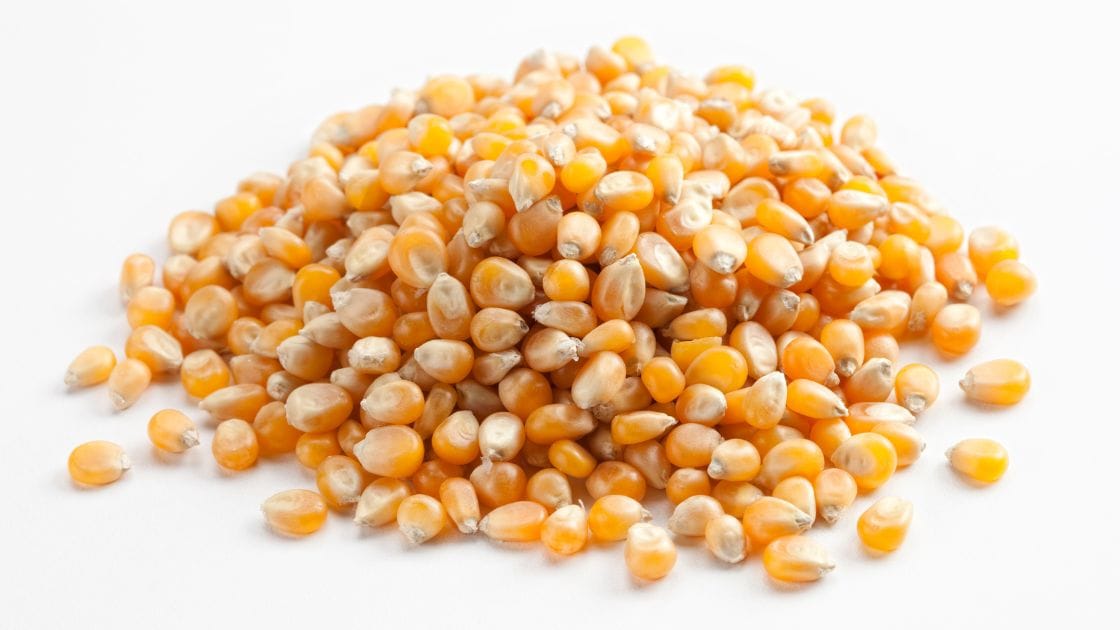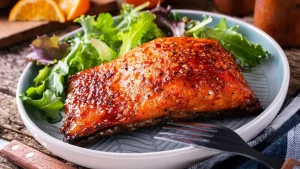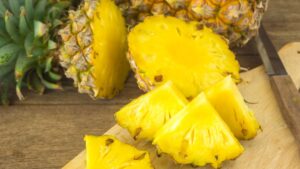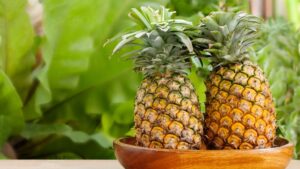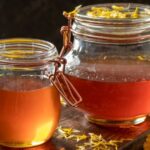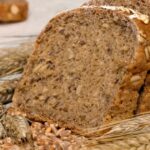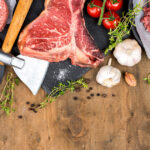Corn is one of the most popular cereals. Not only for its flavor but for its wide production and distribution worldwide.
It is used not only for human consumption but also for animal feed production.
Its wide production and favoritism are due to its great nutritional value. That is why it is often included as an ingredient in some other foods.
Keep reading and discover where corn comes from, its nutritional value, and its benefits. You will love to learn more about this delicious cereal.
Physical description
The corn plant is a tall, upright herb. On opposite sides of the stem, the large, broad leaves are alternately spaced and have wavy edges.
In the panicle that ends the main axis of the stem, staminate flowers (male) are produced. The pistillate (female) inflorescences are spikes with enlarged axes bearing longitudinal rows of spikelets. Each row of paired spikelets normally produces two rows of kernels.
The most consumed types of corn are yellow and white. Although there are also varieties of red, blue, pink, and black corns. The husks are made of leaves and cover each corn ear.
History and production
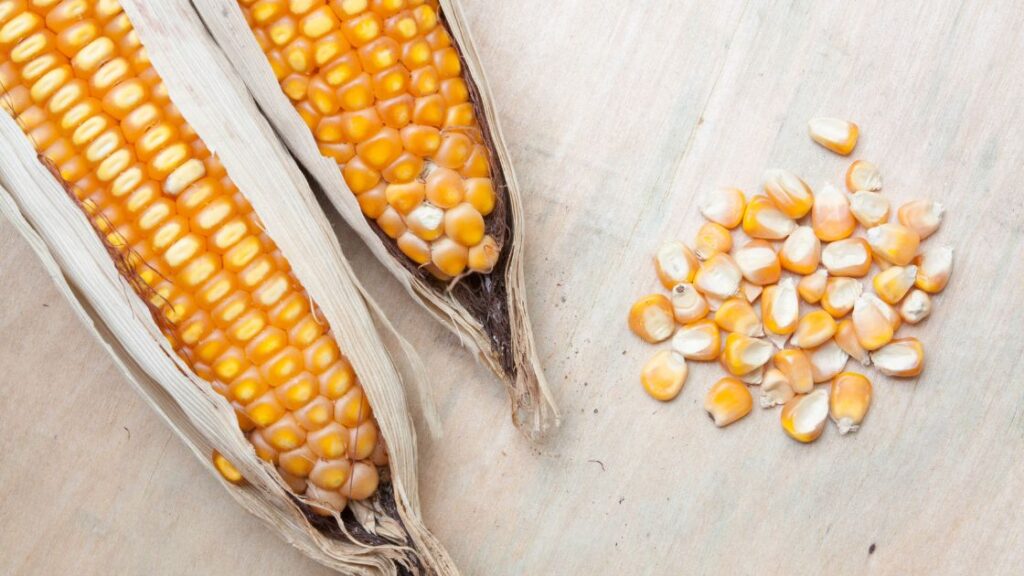
Around 10,000 years ago, the indigenous peoples of southern Mexico cultivated corn for the first time. “Zea mays parviglumis”, a wild grass, is said to have been the ancestor of modern corn.
By the time of the European colonization of North America, their culture had already reached as far south. Native Americans had shown European settlers how to grow local grains.
Maize has spread to all regions of the planet suitable for its production. This has been since Christopher Columbus and other explorers and colonizers brought it to Europe.
A corn crop matures almost anywhere in the world almost every month of the year. It is cultivated from 58° north latitude in Canada and Russia to 40° south latitude in South America.
It is a staple food in many regions and the most important crop in the United States.
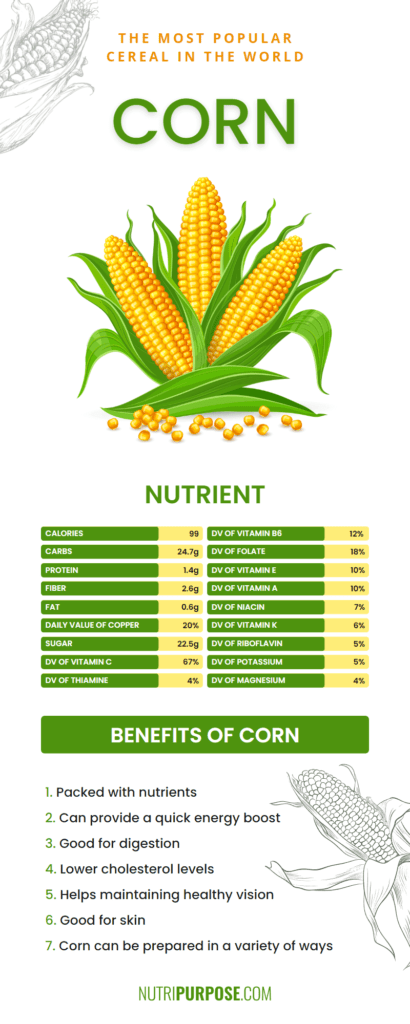
Copy this code and paste on your site:
<a href="https://nutripurpose.com/corn-grain/"><img style="width:100%;" src="https://nutripurpose.com/wp-content/uploads/2023/02/Corn.png"></a><br>Read More <a href="https://nutripurpose.com/corn-grain/">Corn</a>Nutritional Value of Corn
Vitamins
- Vitamin A, RAE 18.26 mcg – 2 % of DV
- Carotene, beta 161.02 mcg
- Carotene, alpha 104.58 mcg
- Thiamin [Vitamin B1] 0.639 mg – 53 % of DV
- Lutein + zeaxanthin 2249.30 mcg
- Niacin [Vitamin B3] 6.021 mg – 38% of DV
- Riboflavin [Vitamin B2] 0.334 mg – 26 % 2 % of DV
- Vitamin B6 1.033 mg – 61 % of DV
- Pantothenic acid [Vitamin B5] 0.704 mg – 14 % of DV
- Folate, food 31.54 mcg
- Folate, DFE [Vitamin B9] 31.54 mcg – 8 % of DV
- Tocopherol, alpha 0.81 mg
- Vitamin E (alpha-tocopherol) 0.81 mg – 5 % of DV
- Vitamin K1 [Phylloquinone] 0.5 mcg
- Vitamin K 0.5 mcg – 0 % of DV
Minerals
- Copper 0.52 mg – 58 %of DV
- Calcium 11.62 mg – 1 % of DV
- Magnesium 210.82 mg – 50 % of DV
- Iron 4.50 mg – 25 % of DV
- Phosphorus 348.60 mg – 28 % of DV
- Manganese 0.805 mg – 35 % of DV
- Selenium 25.73 mcg – 47 % of DV
- Potassium 476.42 mg -10 % of DV
- Zinc 3.67 mg – 33 % of DV
- Sodium 58.10 mg – 3 % of DV
Nutrients
- Alanine 1.170 g
- Protein 15.64 g – 31 % of DV
- Aspartic acid 1.087 g
- Arginine 0.780 g
- Glutamic acid 2.935 g
- Cystine 0.282 g
- Histidine 0.476 g – 42 % of DV
- Glycine 0.641 g
- Leucine 1.917 g – 56 % of DV
- Isoleucine 0.559 g – 36 % of DV
- Methionine 0.327 g
- Lysine 0.440 g – 14 % of DV
- Proline 1.365 g
- Phenylalanine 0.769 g
- Threonine 0.588 g – 36 % of DV
- Serine 0.742 g
- Tyrosine 0.636 g
- Tryptophan 0.111 g – 27 % of DV
- Phenylalanine + Tyrosine 1.405 g – 52 % of DV
- Valine 0.792 g – 40 % of DV
- Carbohydrate 123.27 g – 45 % of DV
- Methionine + Cysteine 0.327 g – 21 % of DV
- Sugars 1.06 g
- Fiber 12.12 g – 43 % of DV
- Fat 7.868 g – 10 %
- Net carbs 111.15 g
- Hexadecanoic acid 0.945 g
- Saturated fatty acids 1.107 g – 6 % of DV
- Monounsaturated fatty acids 2.077 g
- Octadecanoic acid 0.124 g
- Octadecenoic acid 2.070 g
- Hexadecenoic acid 0.007 g
- Octadecadienoic acid 3.481 g
- Polyunsaturated fatty acids 3.591 g
- Octadecatrienoic acid 0.108 g
Other
- Water 17.21 g
- Ash 1.99 g
All the vitamins, minerals, and nutrients that corn has, make it able to offer the following benefits.
Corn health benefits
White corn is a favorite as is yellow corn. But any of its many varieties offer multiple benefits.
Supports Digestion
Corn is an excellent source of insoluble fiber.
Your body does not break down the insoluble fiber found in the cell walls of plants. Therefore, insoluble fiber makes stool bulkier and helps the body eliminate waste.
Increasing your intake of dietary fiber can also help you lose weight. By increasing feelings of fullness after meals, the fiber in corn can also maintain a healthy body weight.
Other high-fiber foods are spinach, bananas, asparagus, and broccoli.
Offers Defending Antioxidants
The primary carotenoids (or pigments) found in corn are lutein and zeaxanthin. These antioxidants help in protecting the eyes.
Research has shown that these carotenoids reduce the risk of eye problems. Additionally, some data points to the presence of antioxidants in colored corn, including corn that is not yellow.
The antioxidant quercetin is also found in trace amounts in purple corn. Quercetin’s ability to reduce inflammation prevents Alzheimer’s disease and other memory-related disorders.
Quercetin has also been associated in studies with increased apoptosis. This is a process through which the body eliminates dysfunctional cells and prevents cancer cells from developing in damaged cells.
Have Important Nutrients
By providing your body with the nutrients it needs, corn can support your overall health.
Corn includes numerous vitamins and minerals that are beneficial to a wide range of bodily functions.
Yellow and sweet corn in particular can be good sources of provitamin A, which your body can convert to vitamin A.
The body needs vitamin A for several reasons, some of which are as follows:
- Immune system support
- Helps in the development of mucous membranes, healthy teeth and bones, and healthy soft tissues.
- Promotes eye health
Additionally, corn contains potassium, which helps maintain normal blood pressure, heart health, and muscle contractions.
Decreases Disease Risk
Foods that protect your health include whole grains such as corn. Eating whole grains has been shown to reduce the risk of heart disease, colon cancer, type 2 diabetes, and obesity.
Get the benefits of corn in a variety of ways. Various sources of corn are:
- Whole corn tortillas or whole corn flour tortillas
- Popcorn
- Complete cornmeal
- Whole semolina
- Frozen, fresh, or canned whole kernels
However, serving size is important. Tailor your serving size to your body’s needs and how active you are.
Adults ages 19 to 59 should consume three to five ounces of whole grains each day. By contrast, people over the age of 60 should consume three to 4.5 ounces of food a day.
Now that you know the nutritional value of corn and its benefits, learn now how to prepare and eat it.
Corn recipes
Corn cakes with cheese
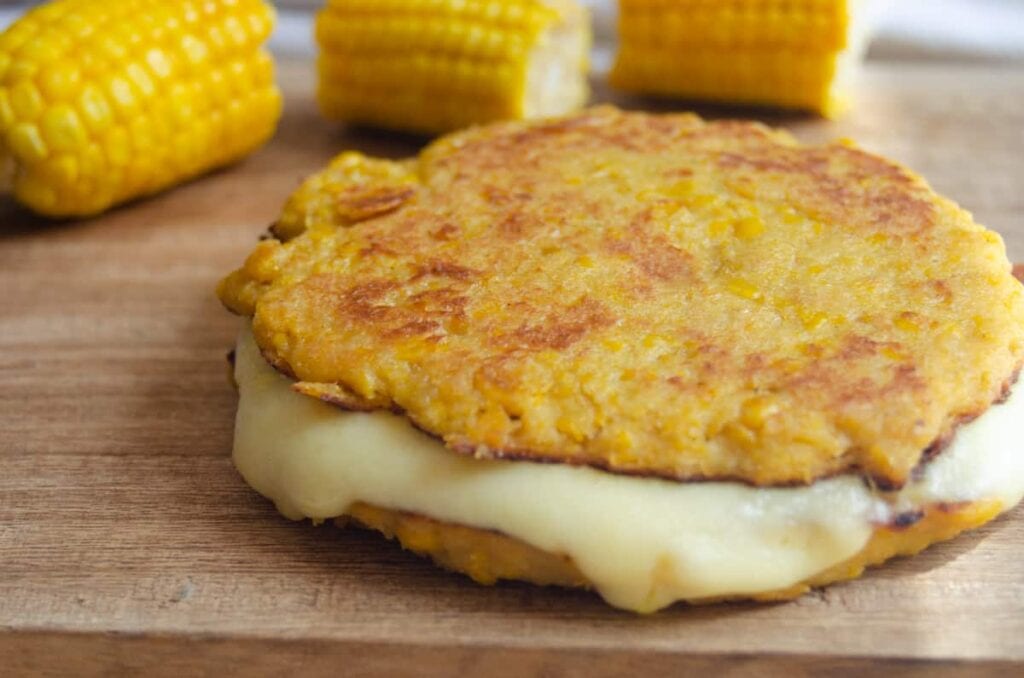
Preparation time: 15 minutes
Servings: 12 cakes
Ingredients:
- 2 eggs
- 175 grams of self-raising flour
- 125 milliliters of milk
- 1 tablespoon of baking powder
- 100 grams of mature cheddar
- 198 grams of can sweetcorn
- 2 tablespoons of sunflower oil
- 2 tablespoons of chopped chives
Salsa dip
- 3 tablespoons of tomato ketchup
- 2 ripe tomatoes chopped
Procedure:
- To make the sauce, combine the tomatoes and ketchup in a bowl.
- Mix the flour, baking powder, eggs, and milk well in a separate bowl.
- Add sweet corn, cheese, and chives stirring until properly seasoned, and mix like a corn salad.
- In a nonstick skillet, heat half the oil. Using the back of the spoon, gently press six tablespoons of the mixture into the skillet. Each spoonful is a cake. Make sure they are separated.
- Over medium heat, cook for 2 minutes or until golden.
- With the mixture and the remaining oil, prepare the other six corn cakes.
- Remove from pan and keep warm.
- Serve and add the sauce on top.
Meat with corn
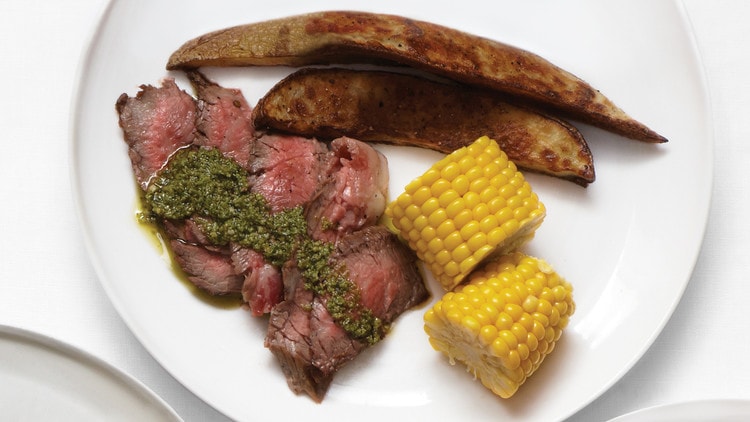
Preparation time: 25 minutes
Serving: 4
Ingredients:
- 340 grams of beef in cubes
- 500 grams of potatoes
- 2 cups of baked corn
- 1 onion
- 2 tablespoons of vegetable oil
- 2 tablespoons of parsley to serve
Procedure:
- Put the potatoes in a saucepan, add cold water to cover, then bring to a boil.
- Cook the potatoes for about 8 minutes and then drain.
- In a nonstick skillet with hot oil, fry the onion for 3 to 4 minutes over medium heat.
- Add the potatoes and meat and cook for about 7 minutes while they are sautéed to get crispy.
- Serve the meat with baked corn and a little parsley.
If you want a super quick and delicious recipe, take a look at the recipe that Nick Offerman gives us:
“I have a corn creamer that I love. It extracts pulp and juice from kernels, and I simmer that down into a creamed corn that has an almost mashed potato-like consistency. I add butter and hit it with chopped fresh chives at the end for an accent of color.â€
Anything else to keep in mind when consuming corn?
- Corn also has starch, like barley. For some people, starch can cause an upset stomach. If you’re one of them, be careful when you try corn for the first time.
- The price of corn is very cheap, you can buy it without problems.
- Today’s corn varieties come from teosinte, the ancestral corn plant.
- Ethanol can be produced from corn.
- In India, they grow their own corn, which is called Indian corn.
- There is no best corn, any of its varieties are healthy.
- It is very common to find pests in corn crops but by following the appropriate steps they can be avoided.
Not only make pop-corn
You already know other recipes that have corn so from now on you can not only eat popcorn. Take full advantage of the nutrients that corn has and enjoy its flavor and benefits. Your body will thank you, you will feel energetic and full of viability.

I am a professional health and nutrition writer with extensive experience in the industry. My passion for sharing valuable insights on nutrition and wellness stems from over 15 years of personal training and maintaining a healthy lifestyle. My commitment to continuously educate myself on the latest trends and research in the field allows me to deliver high-quality content that is informative and engaging. My mission is to empower individuals to make informed decisions about their health and well-being through my writing.
